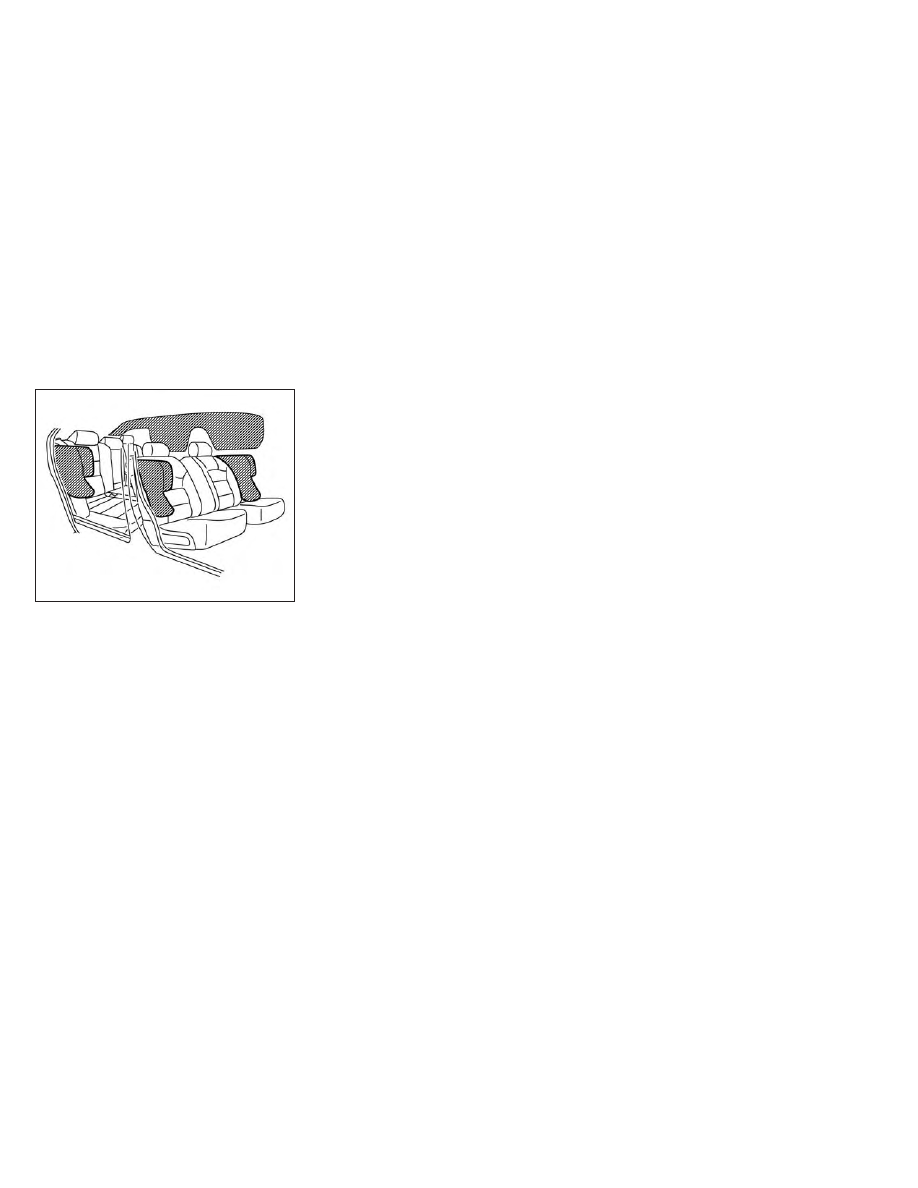Nissan Leaf (2023 year). Manual in english - page 11

Front and rear outboard
seat-mounted side-impact
supplemental air bag and
roof-mounted curtain
side-impact and rollover
supplemental air bag systems
The side air bags are located in the outside
of the seatback of the front seats and rear
outboard seats. The curtain air bags are
located in the side roof rails.
All of the in-
formation, cautions, and warnings in this
manual apply and must be followed.
The
side air bags and curtain air bags are de-
signed to inflate in higher severity side col-
lisions, although they may inflate if the
forces in another type of collision are simi-
lar to those of a higher severity side impact.
They are designed to inflate on the side
where the vehicle is impacted. They may
not inflate in certain side collisions on the
side where the vehicle is impacted.
The curtain air bags are also designed to
inflate in certain types of rollover collisions
or near rollovers. As a result, certain vehicle
movements (for example, during severe
off-roading) may cause the curtain air
bags to inflate.
Vehicle damage (or lack of it) is not always
an indication of proper side air bag and
curtain air bag operation.
When the side air bags and curtain air bags
inflate, a fairly loud noise may be heard,
followed by release of smoke. This smoke is
not harmful and does not indicate a fire.
Care should be taken not to inhale it, as it
may cause irritation and choking. Those
with a history of a breathing condition
should get fresh air promptly.
Side air bags, along with the use of seat
belts, help to cushion the impact force on
the chest and pelvic area of the front and
rear outboard occupants. Curtain air bags
help to cushion the impact force to the
head of occupants in the front and rear
outboard seating positions. They can help
save lives and reduce serious injuries. How-
ever, side air bags and curtain air bags may
cause abrasions or other injuries. Side air
bags and curtain air bags do not provide
restraint to the lower body.
The seat belts should be correctly worn
and the driver, front passenger and rear
outboard occupants seated upright as far
as practical away from the side air bags.
Rear seat passengers should be seated as
far away as practical from the door finish-
ers and side roof rails. The side air bags and
curtain air bags inflate quickly in order to
help protect the occupants in the outboard
seating positions. Because of this, the force
of the side air bags and curtain air bags
inflating can increase the risk of injury if the
occupant is too close to, or is against, these
air bag modules during inflation. The side
air bags and curtain air bags will deflate
quickly after the collision is over.
The side air bags and curtain air bags
operate only when the power switch is in
the ON position.
LRS3142
Safety–Seats, seat belts and supplemental restraint system
1-61